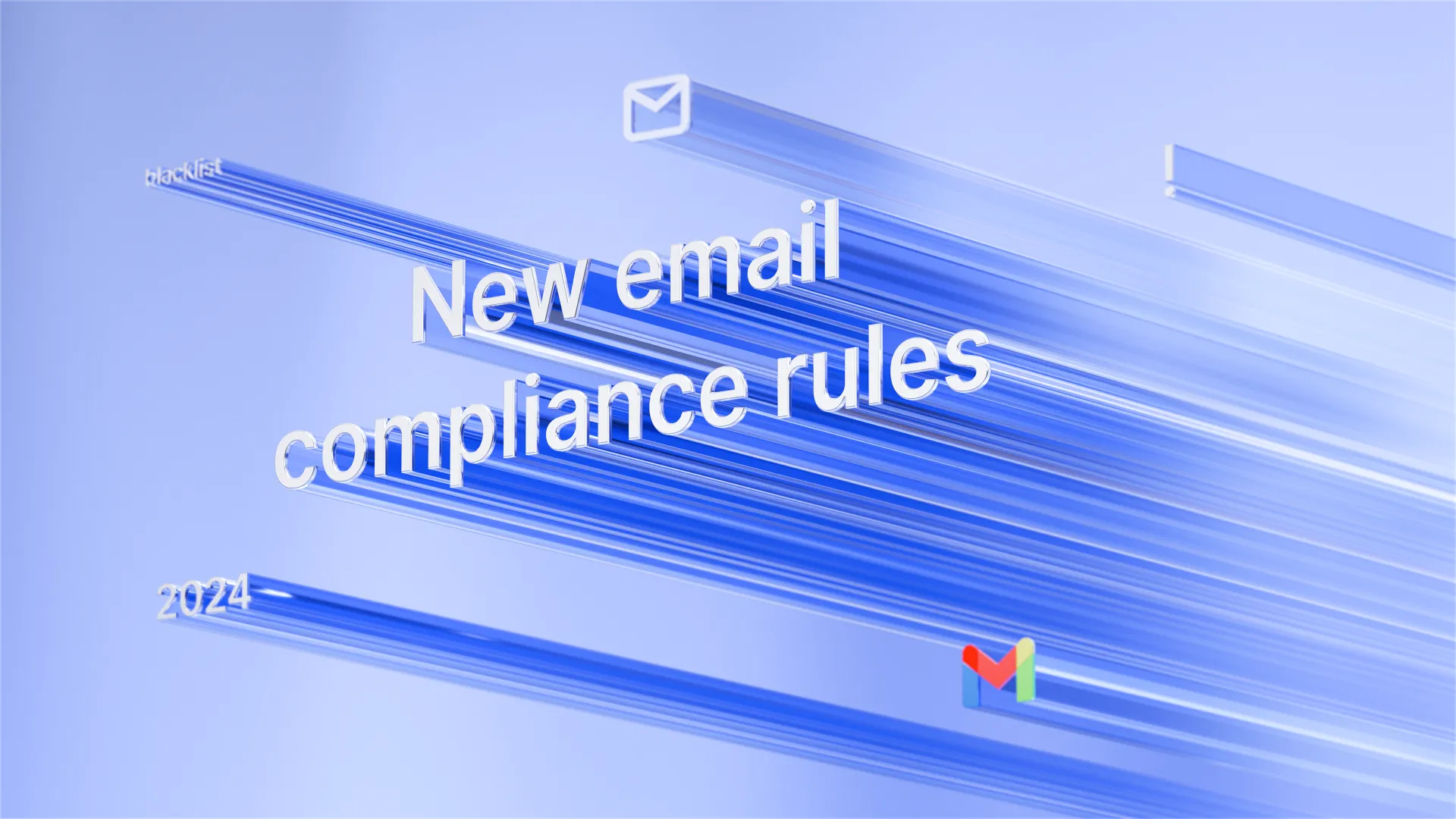You've probably heard about Google’s new sending requirements and Yahoo’s updates, which supported the new Google policies to make email campaigns more secure, reliable, and spam-free. Google already claims to block 99.9% of spam, and new changes are on the way, making excellent email compliance even more critical in 2024.
At first glance, it may appear that these changes apply only to those who send bulk emails (5000+ emails per day). However, even those users who send a few emails a day should also be prepared.
In response, we've taken a close look at the new sending requirements, and we're here to give you a detailed breakdown of what these changes mean. We want to keep you well-informed and ahead of the curve.
Let's dive right in!
A Closer Look at New Requirements
FYI: These changes concern all forms of emails from your domain, including newsletters, marketing, transactional communications, and targeted cold outreach emails.
Requirement #1: Email Authentication (DNS settings)
What it means: DNS (Domain Name System) settings for your domain, which include SPF, DMARC, and DKIM, should be regularly monitored and updated. It is a kind of validation that you as a sender are trustworthy and who you claim to be.
Emails that aren’t authenticated are likely to be marked as spam or rejected with a 5.7.26 error.
Why it matters: Bulk senders often fail to secure and configure their systems, allowing attackers to sneak in. This oversight compromises communication security and clutters inboxes with threats. A proper email authentication 1) protects recipients from spoofing and phishing 2) protects senders and their organizations from impersonation and reduces the likelihood of email providers like Gmail rejecting or marking emails as spam.
Steps required: Regularly monitor and keep your DNS settings up-to-date.
According to Google, the minimum authentication requirements for bulk email senders are to properly set up SPF, DKIM, and DMARC, and for all users, at least SPF and DKIM.
Requirement #2: Easy Unsubscription
What it means: One-click unsubscription is when users can just click once at the hyperlink “unsubscribe” and stop receiving their emails. The case when they are redirected to a page being asked to choose subscription preferences or confirm unsubsciption is already a thing of a past.
Why it matters: Often, bulk senders make it difficult for users to unsubscribe, taking away the time and resources of subscribers. When a person clicks unsubscribe, he or she already has an explicit decision. Therefore, this standardization is set to benefit all email users.
Steps required: Add a one-click unsubscribe link by adding these headers in your email:
-
List-Unsubscribe-Post: List-Unsubscribe=One-Click
-
List-Unsubscribe: <https://solarmora.com/unsubscribe/example>
❗ For bulk senders, it's also required to include a really obvious unsubscribe link in the body of the message. It's not enough to just have a one-click option.
Also, make sure you process the unsubscription requests within two days.
Requirement #3: Desired Emails Only
What it means: According to the new policies, your spam rate should be less than 0.30%, and your domain should not be associated with any spam complaints. Otherwise, Google will think that recipients aren’t bombarded with unwanted messages from your account.
Why it matters: Users should 100% control their inboxes and stay free of emails they do not want to receive. This new spam rate requirement will help to ensure that all the senders follow the opt-in requirement and that users across the world see even less spam in their inboxes.
Steps required: The most important things are confirming each recipient's email address before opting them in, sending regular messages whether recipients still want to receive emails, unsubscribing those who don’t open or read messages, and unsubscribing recipients with multiple bounced messages. It will help to keep the spam rate below 0.10%, a perfect rate recommended by Google.
When Can We Expect These Changes?
These changes won't kick in until the first quarter of 2024, offering you ample time to adapt. Gmail will officially start to require all these policies by February 2024. However, it doesn’t mean you should ignore all the abovementioned requirements.
You should start implementing the requirements as soon as possible to get a strong sender reputation score and stay ahead. Take it from Google:
Why It Concerns All Email Users (Not Only Bulk Senders)
Although the focus is on bulk senders, defined as those dispatching over 5,000 emails in a day to their network, these changes will affect cold outreach users as well.
Let’s start with the official sources. Google officially listed new sending requirements not only for bulk senders but also for all users:
As you can see, all the new basic requirements will concern even those users who send less than 1000 emails a day.
FYI: earlier this year, Google also published an update, according to which it is required to include a one-click opt-out link in both cold and warm emails. Thus, the old recommended practice of avoiding opt-out links in cold emails will not work anymore.
Bottom Line: Opt for Sustainable Email Deliverability (+Extra Tips From Folderly)
The forthcoming changes by Google are significant, and it’s recommended to start working on your sender reputation now. Don’t wait for February if you want to stay ahead of the curve.
The good news is that by focusing on quality, authenticity, and user-friendliness, you can turn these requirements into opportunities to enhance your brand's reputation and ensure your messages always find their rightful place in your audience's inboxes.
As a bonus, our Folderly experts are happy to share with you a few extra tips concerning this new policy (❗ for more tips, check out our article with 25+ steps on how to improve email deliverability):
-
Streamline your SPF, DKIM, and DMARC setup and monitor your DNS settings in real-time with Folderly. As soon as you launch Folderly, even during a 7-day free trial, your DNS undergoes a thorough scan. Our spam trigger detection feature meticulously reviews and checks your settings. If all is well, you'll see a reassuring “pass” mark. But if there's room for improvement, Folderly not only highlights the issues but also guides you through the best practices for fixing them.
-
We have a free SPF Generator and DMARC Generator in place if you prefer manual setup.
-
Ensure that subscribers are fully informed about what they are signing up for: the content, frequency, and ease of opting out. Empower them with choices regarding content, timing, and frequency, giving them control over their inbox experience. This transparency and flexibility foster a more engaged and satisfied audience, which enhances your email deliverability.
-
Periodically update your contact list manually because emails have a tendency to get outdated. We take this issue seriously at Folderly and use a careful, 100% manual approach to assure the accuracy of our contact database. While automated email checks are convenient, they do not provide a dependable guarantee.
-
Unsubscribe inactive subscribers and those with hard bounces immediately. Inactive subscribers should be unsubscribed as soon as possible. By doing so, you can keep your email list in good shape, increase engagement rates, and ensure that your emails reach people who are genuinely interested in your content. This improves your email deliverability and allows for better targeting.
Remember that with the right preparation and email deliverability tools at hand, all the upcoming changes can be seamlessly integrated into your email strategies.
🥂 Cheers to successful email outreach in 2024 and beyond!

